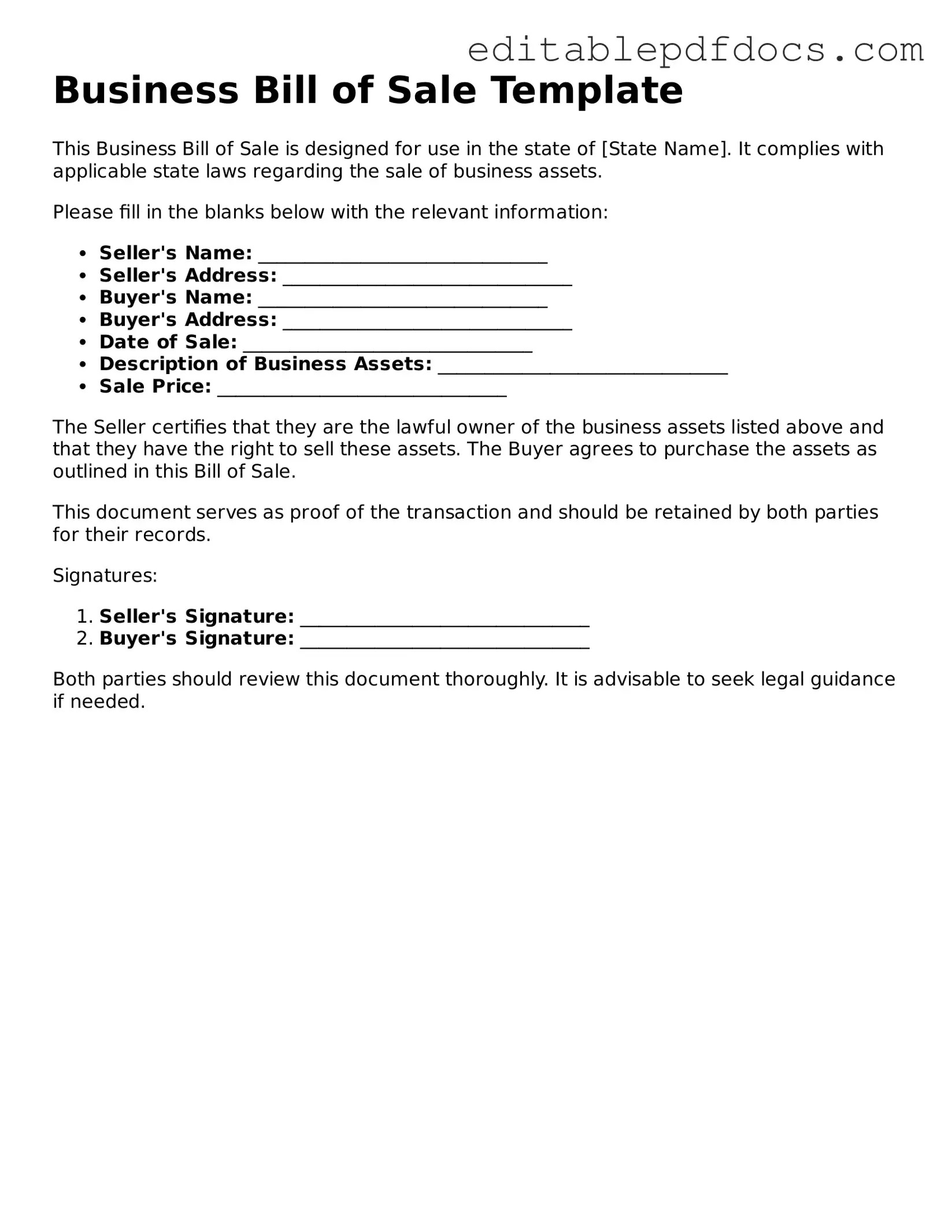When filling out a Business Bill of Sale form, people often make several common mistakes that can lead to complications down the road. One frequent error is failing to include all necessary information. This form typically requires details about the buyer, seller, and the business being sold. Omitting any of this information can create confusion and legal issues later.
Another mistake is not accurately describing the business being sold. The form should clearly state the business name, address, and any relevant identification numbers. If these details are vague or incorrect, it may lead to disputes about what was actually sold.
Many individuals also overlook the importance of including the sale price. This figure should reflect the agreed-upon amount for the business. If the price is missing or incorrect, it can complicate financial records and tax filings.
Additionally, some people forget to sign and date the form. Without signatures, the document lacks legal validity. Both the buyer and seller must sign to confirm the transaction officially.
Another common oversight is neglecting to include payment terms. Whether the payment is made in full upfront or through installments, this information should be clearly stated to avoid misunderstandings.
People often make the mistake of not consulting with a professional. Legal advice can help ensure that all aspects of the sale are properly addressed. Ignoring this step can lead to oversights that could have been easily avoided.
Furthermore, some individuals fail to keep copies of the completed form. It is essential for both parties to retain a copy for their records. Without this documentation, proving the terms of the sale may become challenging.
Another error is using outdated or incorrect forms. Business regulations can change, and using an old version of the Bill of Sale may result in compliance issues. Always ensure that the most current form is being used.
Many people also underestimate the importance of including warranties or guarantees. If the seller is providing any assurances about the business, these should be explicitly stated in the form to protect both parties.
Lastly, some individuals rush through the process without reviewing the completed form. Taking the time to double-check for errors can save significant trouble later. A thorough review can catch mistakes that might otherwise go unnoticed.
